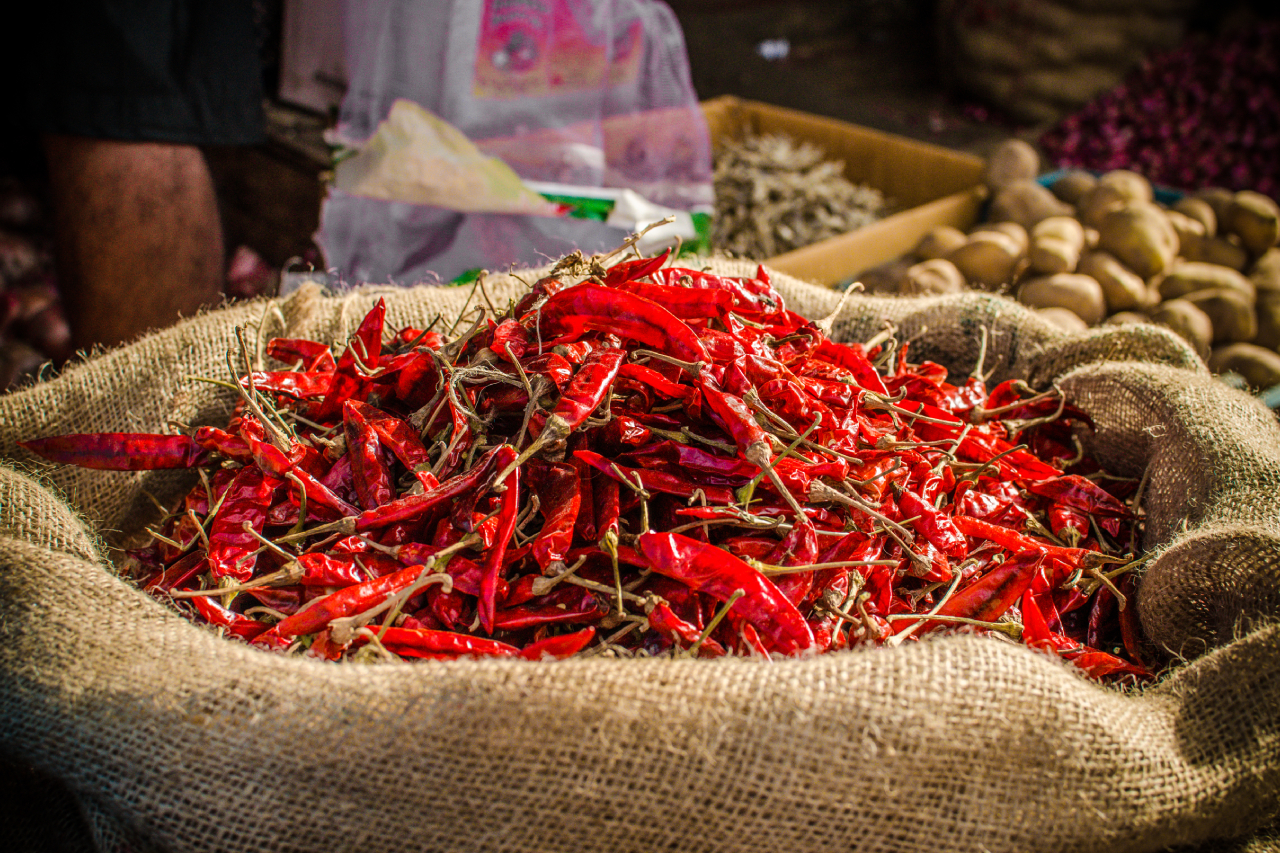India is the world leader in chilli production and export, accounting for approximately 45% of the global chilli trade. With a cultivated area of over 1.5 million hectares, India produces more than 2 million tonnes of chilli annually, featuring varieties such as Guntur Sanam, Byadgi, 334, Teja, and Mundu.
While traditional buyers like China, Vietnam, Sri Lanka, and the USA have remained consistent markets, evolving consumer tastes, innovative food industries, and the rising global popularity of Indian cuisine are unlocking new horizons.
In this blog, we explore the potential frontiers of emerging markets and untapped growth avenues for Indian chilli exporters, especially in view of shifting global dynamics and rising demand for spice-based products.
Global Chilli Market Outlook
The worldwide market for chillies is expected to expand from 2024 to 2029 at a CAGR of 5.8%, driven by:
- Growing consumption of piquant, ethnic cuisine
- Medical benefits of capsaicin (the active ingredient in chillies)
- Surging application in processed and ready-to-eat foods
- Increased demand for chilli-based pharmaceuticals and nutraceuticals
- Rising use of natural colours and flavourings
India’s status as the largest chilli producer especially of pungent Teja and deep-red Byadgi gives it a strategic edge in this expanding global sector.
1. Newer African Markets
Although Indian chillies have long been exported to North African countries such as Morocco and Egypt, there is growing demand from Sub-Saharan Africa. Countries including:
- Nigeria
- Ghana
- Ethiopia
- Kenya
- Tanzania
…are witnessing increased chilli imports due to the rise of local processing units, evolving food culture, and growing popularity of Indian and Asian cuisine in urban regions.
Indian exporters can target these markets with:
- Bulk dry chilli
- Chilli powder for local repacking
- Crushed red chillies for processing
Export Tip: Focus on 50kg PP bags and container loads to reduce cost per kg. Consider working through local agents or traders for initial market access.
2. Latin American Demand
Latin America is traditionally a chilli-producing region, but not all varieties are grown locally. The distinct pungency and colour profile of Indian chillies especially 334 and Teja—are attracting buyers from:
- Mexico
- Peru
- Colombia
- Chile
- Brazil
The main demand is from food processors and hot sauce manufacturers seeking strong, cost-effective base ingredients.
Export Tip: Target B2B buyers in the hot sauce and seasoning industry. Clearly indicate heat levels (SHU) and maintain quality consistency in every lot.
3. Chilli Powder and Flakes in the EU Market
Though the EU enforces strict controls on aflatoxins and pesticide residues, it remains a promising long-term opportunity, particularly in:
- Germany
- Netherlands
- Poland
- France
- Spain
These nations are experiencing rising demand for ethnic cuisine, retail spice products, and organic food segments. EU-compliant Indian chilli powder can meet this growing requirement.
Growth Area: Organic chilli powder and crushed chilli flakes for spice blends and meal kits.
Export Tip: Invest in EU-compatible processing, packaging, and certifications. Acquiring organic certification boosts trust and market access.
4. Southeast Asia’s Growing Appetite
Neighbouring Southeast Asia presents high potential due to its traditional use of red chillies in cuisine and expanding food processing sectors. Target countries include:
- Thailand
- Malaysia
- Indonesia
- Philippines
- Vietnam
These countries consume large quantities of chillies and appreciate India’s reliable supply and regional proximity, which reduces costs and shortens transit times.
Export Tip: Offer both whole and powder formats. Use 10–25kg pack sizes to cater to mid-sized processors and the foodservice sector.
5. Chilli-Based Ingredients for Global Food Processing
An important emerging trend is the demand for chilli-derived ingredients, such as:
- Capsaicin extracts
- Oleoresins
- Chilli oil
- Chilli paste and sauces
These are widely used in the food, pharma, and cosmetics industries. Indian exporters with processing capability can tap into this value-added market.
Top Buyers:
- Global sauce brands
- Meat processors
- Nutraceutical firms
- Vegan and plant-based food manufacturers
Export Tip: Collaborate with food technologists to offer tailored formulations. Ensure compliance with ISO and FSSAI standards.
Important Factors Fueling Export Growth
- Health Trends: Chillies are promoted for their metabolism-boosting and anti-inflammatory properties.
- Fusion Foods: Globalised food culture is creating hybrid recipes heavily reliant on spices.
- Online & Retail Brands: E-commerce platforms are driving demand for specialty chilli products.
- Diaspora Demand: Growing Indian and South Asian communities in the UK, Canada, Australia, and Gulf countries sustain demand for authentic Indian chillies.
Challenges Indian Exporters Need to Overcome
- Strict Import Norms: Especially in EU and Japan concerning aflatoxin and pesticide residue.
- Consistency of Quality: Essential to maintain international standards across shipments.
- Cold Chain & Storage: Poor storage impacts shelf life and leads to infestation risks.
- Brand Building: Most exports are unbranded. Branding enhances product value.
- Supply Chain Volatility: Weather issues and crop cycles influence prices and availability.
What Indian Exporters Need to Prioritise
- Invest in cleaning, grading, and packaging infrastructure
- Obtain global certifications (ISO, HACCP, BRC, EU Organic)
- Establish regional warehouses in key markets
- Use digital marketing to connect with B2B buyers
- Explore semi-processed and value-added chilli products
Spicesindia – Reliable Exporter of Indian Chillies
At Spicesindia, we stay ahead of global taste trends and supply chillies that meet specific market needs. Our strong sourcing network across Andhra Pradesh and Karnataka ensures premium quality Teja, Byadgi, and Guntur Sannam chillies.
We supply to food brands, wholesalers, and importers globally, offering:
- Whole dry red chillies (sun-dried & machine cleaned)
- Chilli powder (custom mesh sizes)
- Crushed chilli flakes
- Private label packaging
- Fumigation, sorting, and containerisation



